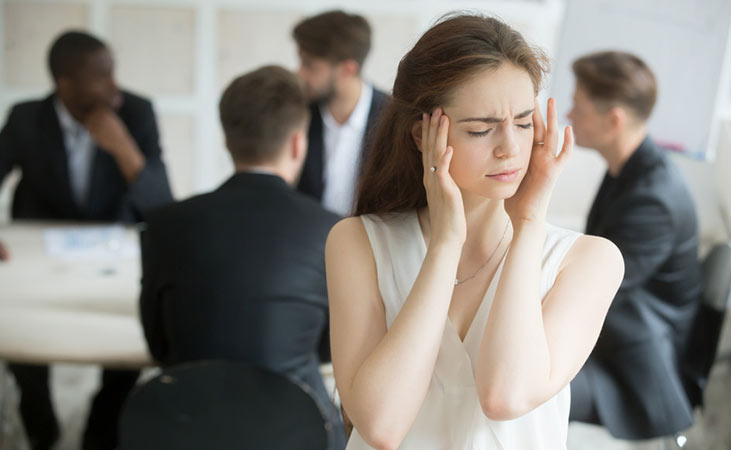Sick building syndrome is a much studied disease that has now been followed by many studies. Probably the most informative study in this regard is the Pro-KlimA study.
- Approximately 5,000 office-based employees were studied over 6 years. The results have shown that there are clear causal tendencies.
- Projections by experts also show that 400,000 people in Germany alone are affected by sick building syndrome.
In this article you will learn what causes the syndrome in buildings. First of all, we will give you a brief overview of what exactly the disease is.
Sick due to “sickening” building
The term sick building syndrome (SBS for short) describes a situation in which people working in offices suddenly show symptoms of illness. These include eye burning, runny nose and headache.
If you leave the building again or go for the weekend, the discomfort is alleviated abruptly. It appears that the building is making employees sick.
Cause 1: Biological factors
Bacteria and dust can accumulate relatively quickly in rooms. If the outside air is heavily polluted (e.g. in inner city areas), the fine dust enters the building through ventilation.
Also of concern is mold growth. Insufficient ventilation can cause moisture to accumulate and, when combined with a cool spot, become a breeding ground for fungus. There is a particular risk of mold in buildings that are “dead-insulated” and thus can no longer exchange air as expected.
Through the use of fans and air conditioning, bacteria, viruses and co. are additionally stirred up and distributed in the room. This leads to even greater stress on the human body.
Cause 2: Chemical factors
Volatile organic compounds (VOCs) can lurk everywhere and have a negative impact. Basically, the risk is higher indoors than outdoors. This is because the distance to VOC sources is usually smaller indoors.
These compounds can be found mainly in products and materials for building construction and furnishing (e.g. paints, varnishes, adhesives, decorations, furniture and materials for floors and walls). Tobacco smoke or care and cleaning products are also VOC sources. Especially in offices, the “vapors” from copiers, printers and the like are particularly dangerous.
Furthermore, chemical pollution and thus causes of sick building syndrome also include airborne dust and pesticides.
Cause 3: Physical factors
A key factor here is the indoor climate. This is composed of temperature, humidity and air velocity.
If an air conditioner is poorly maintained and runs in a continuous loop, it can quickly lead to muscle tension and dried-out mucous membranes. This in turn easily leads to colds and infections. The decisive factors are the resulting drafts, the drying out of the air and the stirring up of bacteria and viruses.
Typical radiators can also cause symptoms similar to air conditioning due to convection heat and hot air. In addition, the wrong lighting (toxic effect and glare) or low-frequency sound can be harmful to humans.
Cause 4: Psychological factors
Not to be ignored are the psychological aspects. These are less related to the building and more to the working conditions around the employees’ activities. For example, stress or under-demand at work can lead to distressing symptoms. It is not uncommon for a bad working atmosphere or even mobbing to surface in companies.
In addition to psychological problems, this often leads to physical health problems. Not surprisingly, the symptoms quickly subside or even disappear completely when leaving the workplace.
Conclusion: Only those who think holistically remain healthy!
Each cause source can be a problem on its own. That’s why you should always make sure that you take care of all the pillars. Only if you meet the biological, chemical, physical and psychological requirements, you, your family, your colleagues or your employees will be well.
Get the action plan right!
When you pick up a to-do list, be sure to implement the things that have the most leverage first. For example, you can use simple methods to ensure that psychological aspects, such as a good working atmosphere, are created. In addition, the replacement of air conditioning systems and radiators should be considered. Today, there are already much healthier working plants.
These include, and a little self-promotion must of course be at this point, e.g. surface heating and cooling.
These work almost without air circulation and do not dry the air.
Our surface temperature control is also energy-saving and healthy for people. If you also want to benefit from the energy-saving and healthy surface temperature control, click here.
Yes, I would like to benefit from the energy-saving and healthy surface temperature control.
Photo: fizkes – fotolia.com



